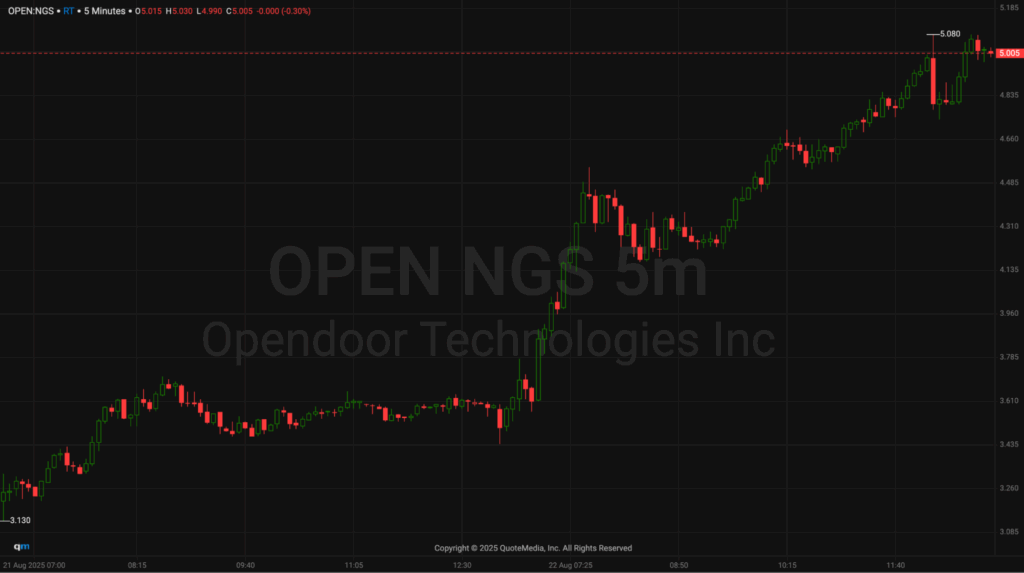Hey traders,
Mondays trick traders into thinking more trades equal more money.
You come in hot after the weekend, itching to hit buttons. By lunch, you’re juggling three positions, sweating the swings, and wondering why Mondays always feel so brutal.
So why do most traders skip the most important step?
Deciding risk and reward before they trade.
So this week, I’m giving you homework.
Take one stock from your watch list. Before you touch the buy button, write down two numbers:
- The dollar amount you’re willing to risk.
- The realistic upside you’re aiming for.
That’s it. Just two numbers.
If you can’t do that, you don’t have a trade, you’ve got a gamble.
I’ll show you how I did this with one stock that lit up my Power Signal Indicator last week.
Then it’s your turn to pick a ticker from your list and do the same.
Last Friday, Opendoor Technologies (NASDAQ: OPEN) went wild.

Setting off one of the biggest Power Signals I’ve seen in months. Volume like that grabs attention fast.
Here’s what my indicator flagged:
- Buy alert: $4.95
- Risk level: $4.70
- Big breakout levels: $4 and $5
The setup looked strong. But strength alone doesn’t equal a trade, you need math.
If you enter at $4.95 and set risk at $4.70, that’s $0.25/share at risk.
Now let’s map the upside. Break $5 with that kind of volume, and $5.50–$6 isn’t unrealistic.
That’s $0.55–$1.05/share potential reward.
So what’s the ratio?
- $5.50 target = about 2-to-1.
- $6 target = about 4-to-1.
That’s the math I want to see. Risk capped, reward stacked, edge in my favor.
But let’s be real, volume cuts both ways. With that many shares traded, fakeouts and flushes can rip your account before you blink.
And with Jerome Powell speaking at Jackson Hole, the entire market could swing hard.
That’s why you write the numbers down before the trade. When volatility hits, you won’t trust your emotions; you’ll trust your plan.
Now here’s your part.
Take one stock from your watch list and do this same exercise.
- Write your entry.
- Define your stop.
- Define your target.
- Calculate the ratio.
Don’t overthink it. Just get the numbers on paper.
If the math doesn’t make sense, skip the trade. If it does, you’ve got a setup you can actually repeat.
That’s how you avoid death by a thousand Monday trades.
You slow down, run the numbers, and only take shots where risk and reward line up.
The market rewards math, not excitement. OPEN was my example.
Now it’s your turn to run the numbers on a stock you’re watching.
That’s your homework. One stock. Two numbers. Do it before you trade this week.
Talk soon,
Jack Kellogg
